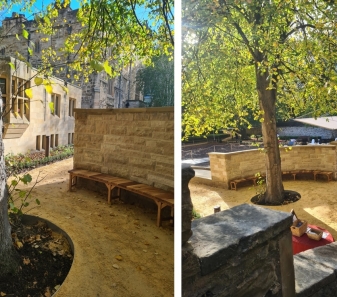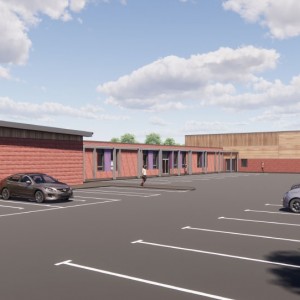Most schools tend to grow organically, so that over the years, just like an expanding village, the school will develop further accommodation in a random reaction to immediate needs, building in between ever smaller gaps. If this sounds familiar, Neil Turner suggests an alternative approach….
I am often asked by schools to consider how another building might be incorporated into an already overcrowded campus, due to a pressing need for further accommodation.
People are often surprised when I reply that sometimes they don’t need a new building, but need to review what they already have, or in fact, remove some existing accommodation first!
Most schools tend to grow organically, so that over the years, just like an expanding village, the school will develop further accommodation in a random reaction to immediate needs, building in between ever smaller gaps – sounds familiar? The best plan, by far is to think ahead.
Undertaking a masterplan is not about having a pre-ordained view of what is needed, but taking stock of everything around you – from the buildings themselves, to the size of the school, the future needs of the wider environment outside the school and crucially, considering the academic and curriculum requirements both now and over the next 25 years.
Each masterplan should be unique to an individual school because each school will have its own challenges. Don’t be tempted to copy or adapt another plan. Its worth the investment of time and energy in creating your own plan.
So how should you start a masterplan? I would approach it from several perspectives to make it useful for the school and its wider estate.
1. Education: Define what you want to achieve. If you are a sporting school and your hall facilities are tired or in the wrong place, that might be the logical staring point, or it may be that the current curriculum doesn’t match the accommodation, or your STEM facilities are inadequate or there is insufficient space for Art.
2. Status and the age of the building: Is your building listed or in a conservation area, which might restrict your ambitions and shape the form of any redevelopment work? There is little point in planning to demolish a building if you can’t or are limited in what can be altered.
3. Condition of the buildings: Do you know the condition of all your buildings? If the answer is “no”, you may need a condition survey to be undertaken to feed into your thinking and ultimate plan. An architect or building surveyor can advise on this specialist advisory area.
4. Landscaping: Quite often ignored, landscaping should be considered at the early stages of the masterplan. If you have a large campus or estate, then how it looks may be important to your plan. In comparison, a tight site may challenge the plan for accommodation. In either case, don’t underestimate the importance of the greenery and its future impact on the image it will project for your school.
5. Local Authorities: It is important to interact with the local planning team through this process to gauge their comments and take on board their points of view.
From these main ingredients you should be able to commence a masterplan.
I would recommend an architect to guide you through this process. Be careful to engage someone who is looking at the long term and not simply designing buildings. This is an important point. Too often I have seen masterplans produced as a series of designed buildings, whereas this is a strategic thinking process and not about designing the finished buildings.
The design of the buildings comes along much later and as much as this is great fun for the architect, it’s not the point of the masterplan.
Once you have a strategy, you can begin thinking about where and how the site should be improved which may involve extending buildings, demolishing redundant stock or building afresh.
There will be multiple options at this stage and the skill is assessing them logically with the pros and cons of each one – because you may have several that work.
Ultimately the Headmaster, Bursar and Governors need to agree a joint approach. You can’t have everyone going in different directions.
Once the approach is set, the creation of the timescale is the next task. This task is determined by many factors, not least money and affordability.
Situations and timescales can vary over time and the likelihood is that the masterplan might also require some modification. This is inevitable and you shouldn’t be afraid to revisit this document.
The issue of finances then takes control. It’s often wise at the outset to have some costings put on the proposed development to act as a guide and add reality to the work. A quantity surveyor should be employed to undertake this along side the architect, even if you only require a basic guide to costs.
Future major decisions can then be made rationally, logically and within the context of the clear plan.
Independent Schools Magazine – September 2020













